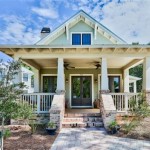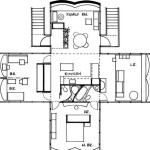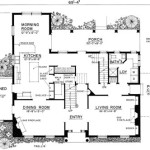Electrical Diagram Symbols For House Plans: A Comprehensive Guide
Electrical diagrams are a crucial part of any house plan, providing a visual representation of the electrical system and its components. These diagrams are essential for ensuring the safe and efficient installation of electrical elements, enabling electricians to understand the layout, connections, and specifications of the electrical system. Whether you're a professional electrician, a homeowner planning renovations, or an architecture student, understanding electrical diagram symbols is paramount. ### Importance of Electrical Diagram Symbols Electrical diagram symbols serve several key purposes: -Clear Communication:
They provide a standardized and universally understood language for electricians and other professionals to communicate design intent, ensuring accuracy and consistency in electrical installations. -Accurate Design:
Electrical symbols help in the precise design of electrical systems, allowing engineers and architects to specify the types of components, their locations, and their interconnections. -Trouble-free Installation:
Well-drawn electrical diagrams guide electricians in the proper installation of electrical components, reducing the risk of errors and ensuring compliance with electrical codes. -Easy Maintenance and Troubleshooting:
In the event of electrical issues, electrical diagrams serve as a valuable resource for troubleshooting, helping electricians quickly identify and resolve problems. ### Understanding Basic Electrical Symbols Electrical diagram symbols encompass a wide range of graphical representations, each denoting a specific electrical component or function. These symbols can be broadly categorized into:1. Power Sources:
-Generator:
A symbol depicting a generator, a device that converts mechanical energy into electrical energy. -Transformer:
A symbol representing a transformer, which changes the voltage level of electrical power. -Battery:
A symbol indicating a battery, a device that stores electrical energy.2. Distribution Components:
-Circuit Breaker:
A symbol for a circuit breaker, a safety device that automatically switches off the electrical circuit in case of overcurrent. -Fuse:
A symbol representing a fuse, which protects an electrical circuit by interrupting the current when it exceeds a specified value. -Switch:
A symbol denoting a switch, a device used to control the flow of electricity in a circuit.3. Lighting Fixtures:
-Light Bulb:
A symbol representing a light bulb, indicating the placement of a lighting fixture. -Wall Sconce:
A symbol depicting a wall sconce, a light fixture mounted directly on a wall. -Ceiling Light:
A symbol indicating a ceiling light, a light fixture suspended from the ceiling.4. Wiring and Connections:
-Single-Line:
A solid line representing a single-phase electrical connection. -Double-Line:
Two parallel solid lines denoting a three-phase electrical connection. -Ground:
A symbol indicating a ground connection, which provides a path for electrical current to flow to the earth. ### Interpreting Complex Electrical Diagrams More complex electrical diagrams may include additional symbols and notations, such as:1. Grounding Symbols:
-Earth Ground:
A symbol representing the earth ground, a connection to the ground electrode. -Equipment Ground:
A symbol denoting the equipment ground, a connection to the metal enclosure of an electrical device.2. Control Devices:
-Motor:
A symbol representing a motor, a device that converts electrical energy into mechanical energy. -Relay:
A symbol denoting a relay, an electrically operated switch that controls another circuit.3. Instrumentation Symbols:
-Voltmeter:
A symbol indicating a voltmeter, a device used to measure voltage. -Ammeter:
A symbol representing an ammeter, a device used to measure current. -Wattmeter:
A symbol denoting a wattmeter, a device used to measure power consumption. ### Reading and Understanding Electrical Diagrams To effectively read and understand electrical diagrams, it's essential to: 1.Familiarize Yourself with Symbols:
Refer to standard electrical symbol guides to become familiar with various symbols and their meanings. 2.Study the Layout:
Examine the diagram's layout, paying attention to the placement of components and their interconnections. 3.Interpret Line Connections:
Understand the connections between components, following the paths of single-line and double-line symbols. 4.Identify Control Devices:
Locate control devices such as switches, relays, and timers, which determine the operation of the electrical system. 5.Check Grounding Symbols:
Ensure proper grounding connections are indicated to prevent electrical hazards. ### Conclusion Electrical diagram symbols are vital in communicating electrical system designs for house plans. These symbols enable professionals to create accurate and comprehensive electrical layouts, ensuring the safe and efficient installation, maintenance, and troubleshooting of electrical components. Understanding electrical diagram symbols is a fundamental skill for electricians, engineers, architects, and anyone involved in the planning and execution of electrical systems.
Electrical Wiring Symbols For Home Electric Circuits Symbole Electrique Câblage électrique Maison

Home Electrical Plan Symbols

It S Electrical

Free House Wiring Diagram Edrawmax

Electrical Floor Plan Symbols Google Search

House Electrical Plan Diagram Symbols

Home Wiring Plan Making Plans Easily House Electrical Symbols How To

It S Electrical

Dia Sheet Electrical Electricity Symbols For Floor Plans Based On Belgium Regulations
Create An Electrical Plan Roomsketcher Help Center








